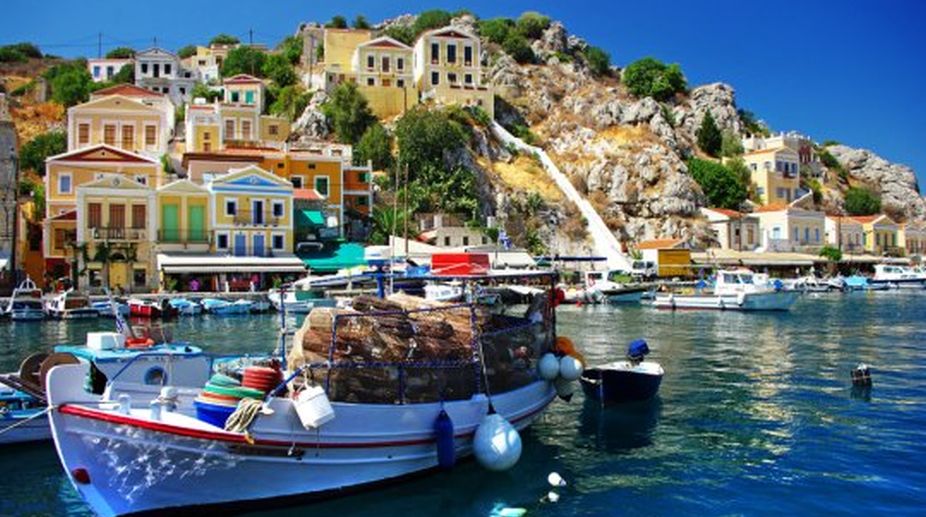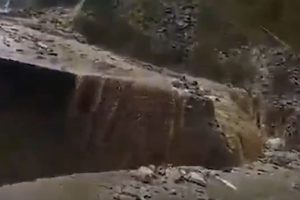Greece has fascinated me since my school days for its rich mythology and heroic history.Turning myths into history, the Greeks have erected monumental kingdoms with stately temples to honour their gods and goddesses. In this country, history witnessed the works of great men like Plato, Socrates, Aristotle, Herodotus, Aeschylus, Sophocles and Euripides among others. My mind thus automatically de-anchored as the Turkish aircraft took to the sky from Delhi airport to land at Athens.
Crossing the Aegean Sea, the plane reached Hellas, the historical name of Greece. Minoan in Crete and Helladic culture almost 5000 years ago are the earliest recorded civilisations in history. However, natural cataclysms wiped off most of its remains. In Athens, the capital of Greece, was situated the ancient city of Acropolis. A conflict arose between Athena, the goddess of wisdom, and Poseidon, the seagod on becoming the patron God of Acropolis.
Poseidon released a brackish water fountain while Athena created olive, symbol of peace and prosperity. People supported Athena and in the 5th century BC, Pericles dedicated to her an exquisite temple named Parthenon. It had 58 marble doric columns. Later it became a centre for the arts, learning and philosophy, home of Plato’s academy and Aristotle’s Lyceum, and is widely referred to as the cradle of Western civilisation and the birthplace of democracy, largely because of its cultural and political impact on the European continent, and in particular the Romans.
Ancient Roman and Byzantine monuments, sculptures, Erechtheion, temple of Athena Nike and the Propylaia were all marvels to watch. Outside the Acropolis there are Syntagma Square, President House, Parliament, Hadrian’s Arch, modern Olympic temple and ground, temple of Olympian Zeus and the attractive Archaeological site of Acropolis, which was an awesome experience as one could view the city through its glass floor.
I visited two islands in the Aegean sea, namely Santorini and Mykonos. Santorini’s centre got submersed forming caldera due to extensive volcanic activity some 3600 years before. One can find reference to this island in Plato’s scripts which say that it was the outcome of Zeus’ wrath. Remains of Minoan civilisation were discovered from this island. White churches with blue domes on the Oia shore looked spectacular during sunset. A part of Mykono buildings stands amidst the sea resembling Venice. With ancient windmills dotting the shore it was a wonderful view.
I visited some exotic historical places and monuments while motoring through the plains and hills of Argos and Sparta. Corinth Canal was built in 1893 to connect Corinth and Saronic gulfs. There are the Roman Agora and 6th century BC temple of Apollo. Travelling through beautiful roads and tunnels, I reached Epidaurus, the birthplace of medicine God Asclepius.
In 6th century BC there was a sanatorium here where many used to come for treatment. The 4th century BC amphitheater with astounding acoustics and a capacity to hold 14000 spectators is one of the best spots in Greece. Till this day it hosts two dramas a week. Our next stop was Nafplio, a small port city at Argolic Gulf, occupied for long by warring Turks and Venetians.
Its biggest attractions were the Bourtzi fort within sea, two hilltop Venetian fortresses and several Turkish mosques. It was the capital of first Hellenic Republic. Driving through the plains of Argos was a pleasant experience as red and white oleanders and olive trees lined the road.
Next I visited Mycenae, once a major centre of Greek civilisation in the second Millennium BC. In 1878 Heinrich Schilemann excavated and discovered Agamemnon’s tomb, Lion Gate, Grave Circle, royals’ burial ground, and other antiquities of ancient Hellenic civilisation. It was destroyed in a massive fire that engulfed almost the entire Peloponnesse peninsula.
Proceeding towards the ancient village of Olympia, I saw a sanctuary in Elis comprising temples of Zeus, Hera and the place of altar. The first Olympic festival was held in 776 BC and thereafter more buildings came up to meet the necessity of holding the games until it was destroyed in 4thcentury AD due to natural calamities. The Philippeion was built by Alexander to commemorate his father and Macedonian king Philip II’s Olympic win in chariot race.
The stadium has a length of 192.8m with a capacity of 45,000 spectators to watch. The bus drove through the Valley of Pleistos River by Parnassus Mountain. Walnut and olive trees covered the valley though the vineyards. Arachova, famous for its black wine, is a hilly town with an amazing panoramic view. A distant Bell Tower atop the hill can also be seen. Close to it is the ancient sanctuary Delphi. Greeks believe that it is the centre of the world represented by a rock called Omphalos.
Great mystic powers are associated with this area whose jutting mountain, gaping chasms and rushing springs offer a dramatic view. The site is full of temples along with a stadium and a 4th century BC theatre. Another wonder of nature is Meteora where scores of rocks point to the sky. Indications could be found of cave men dwelling here nearly 5000 years ago. Out of 24 sheltered monasteries only six are now in use.
I also witnessed the Neroic monument of Leonidus, the king of Sparta, at Thermopyles where the king with his army fought till death with million Persian soldiers. At end of the tour, I was left wondering how India and Greece share a similar approach towards life by embracing their rich mythological, historical and cultural heritage.











